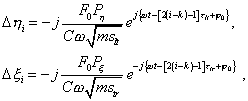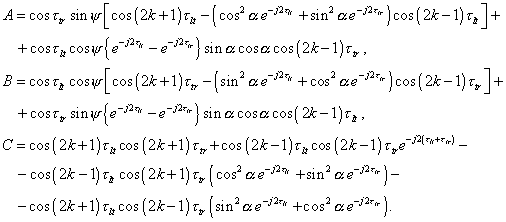| SELF | 96 |
| S.B. Karavashkin, O.N. Karavashkina | |
|
|
As we can see from the preliminary analysis, the vibration pattern essentially transforms in case of inequal stiffness coefficients. Each of three regions has its salient features that require their broad investigation. Regarding the low-frequency pattern of geophysical vibrations, in this work we will limit our investigation by the first region. If the condition (33) was true, then in the band 0 < for i |
|
 |
(34) |
| and for i > k | |
 |
(35) |
| where | |
 |
(36) |
 |
(37) |
As In the after-bend region the progressive wave forms; its amplitude depends not only on the line parameters and the bend angle, but on vibration frequency, too. As we said above, with it the phase delay for longitudinal and transverse components differ, and this complicates the resulting pattern of the vibration process. Particularly, in the region of in-phase total phase delays we see the positive inclination of a progressive wave (i.e., the wave propagates with the angle ahead). With the antiphase total phase delay we see the negative inclination of a wave (i.e., the wave propagates with the angle back). These regions take turns. |
|